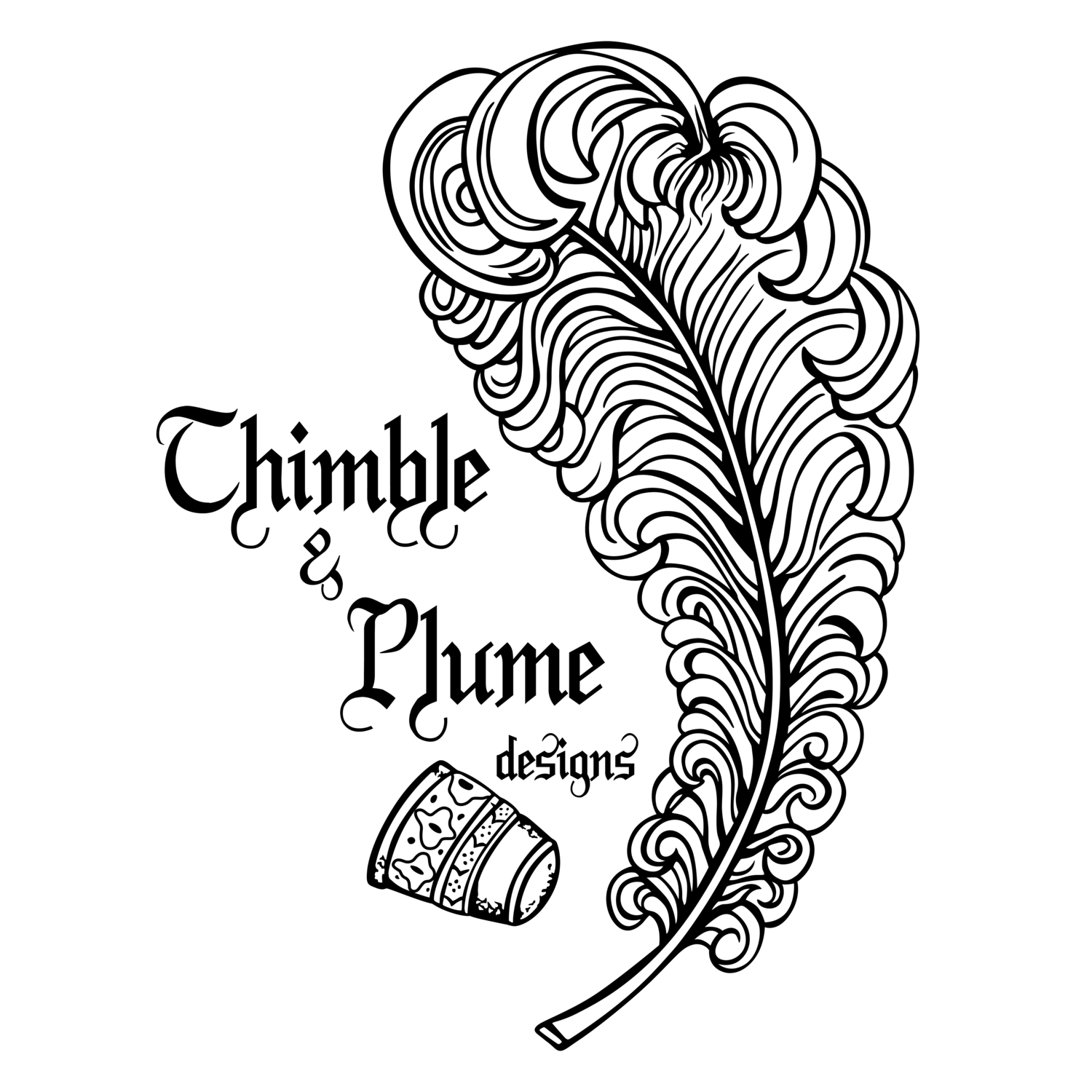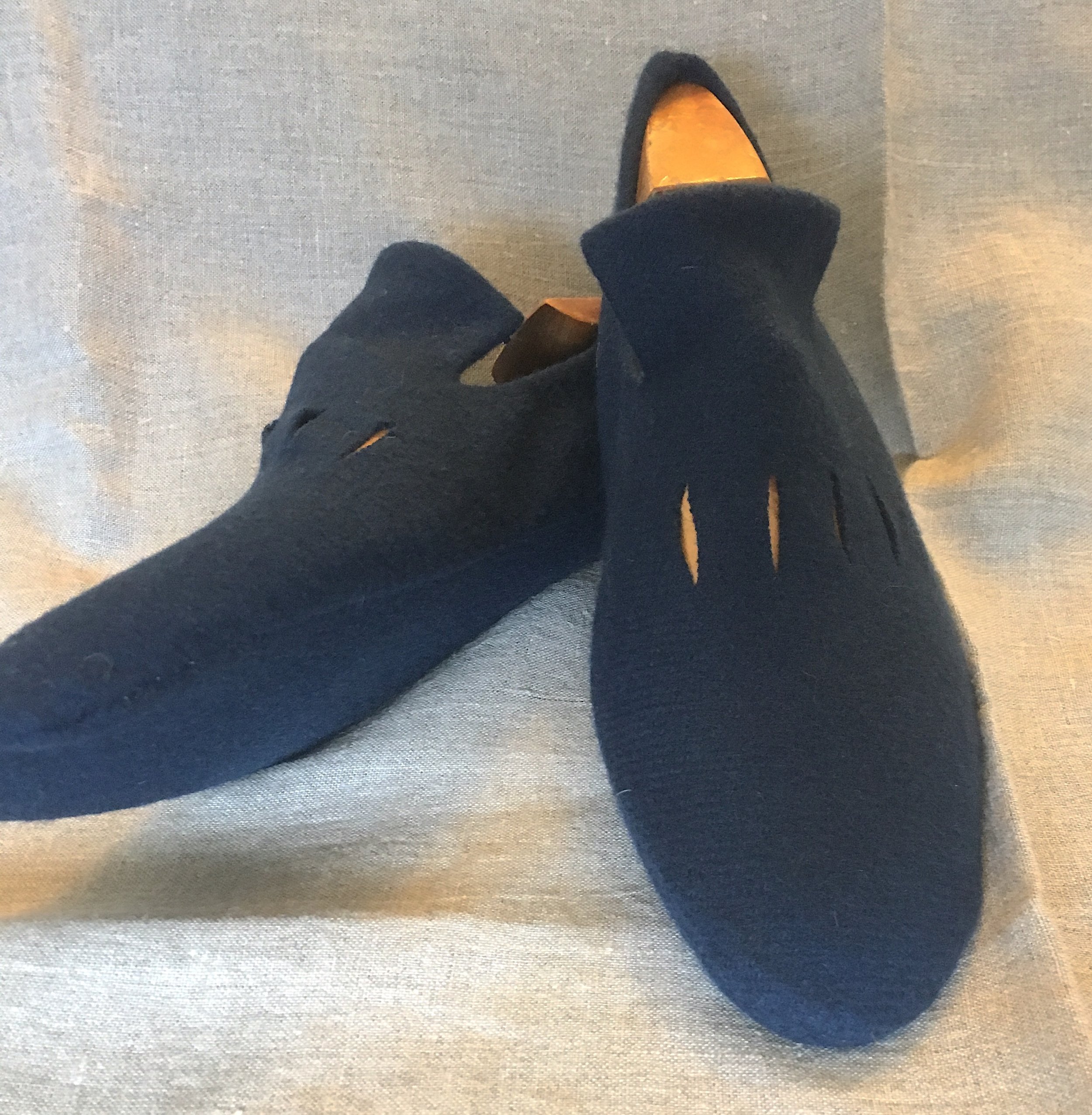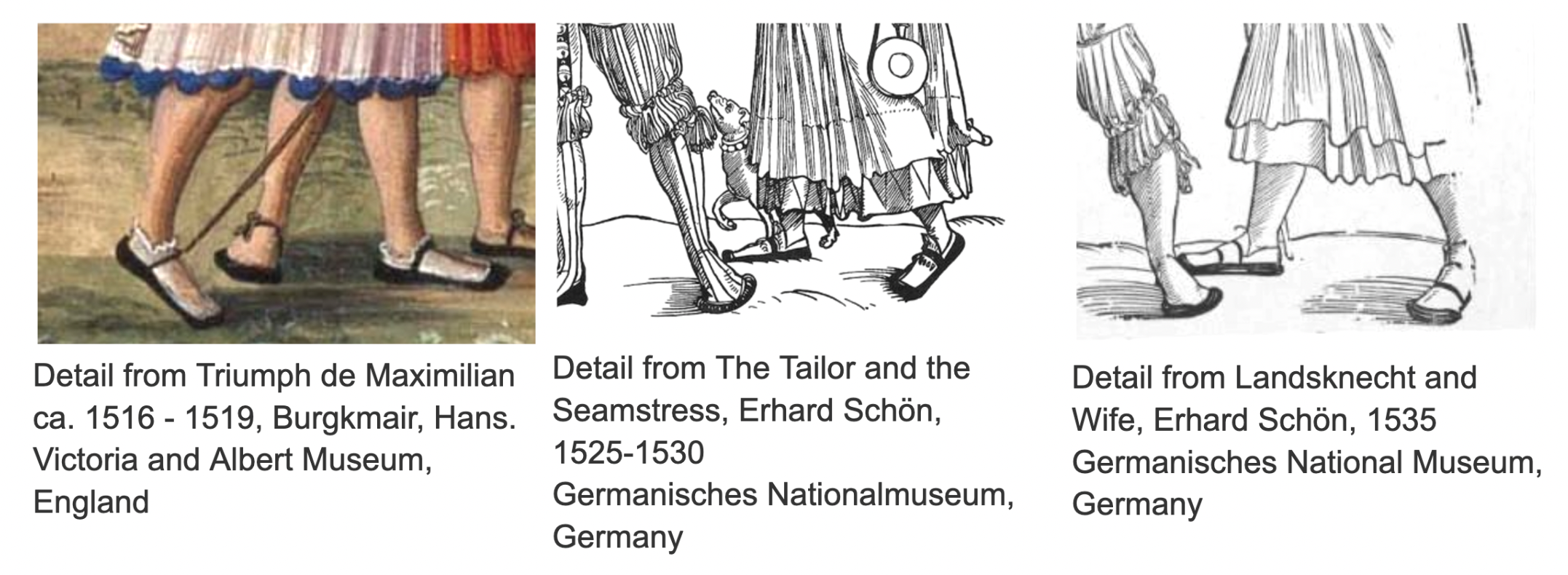New Pattern Release: Trossfrau Sock!
Inspired by extant examples and period woodcuts, Malin developed this pattern for a low-cut, 16th century Trossfrau sock about ten years ago. We are very excited to now offer her pattern to all of you in a convenient digital pattern. Available in our shop now!
Make a pair in linen for those hot days when wearing full or knee length hosen is just too much! Or make them out of wool and wear them over your hosen as an added layer of warmth and protection from the cold. This is a quick and portable project that is a great introduction to hand sewing.
HISTORICAL BACKGROUND
Along with their characteristic bundlein (wrapped veils), bloused skirts, and heavily-laden pack basket, many Trossfrauen are depicted wearing low-cut socks, either instead of or in addition to their hosen (tall stockings). One theory is that these short socks were worn to prevent unnecessary damage to the more expensive hosen or as a liner for their shoes for added comfort. After all, Trossfrauen were travelling almost exclusively on foot.
Available visual resources depict these low-cut socks being worn by female camp followers and peasant women; it is unclear whether they were also worn by men. One entry from an inventory of the Swedish court in the early 16th century mentions socks with “lesser amount fabric” than ordinary socks, but does not specify the gender of the person for which these short socks were intended.
While written sources on low-cut socks appear to be rare, an extant piece has luckily survived. This linen “inner shoe” was found in the Altes Rathaus of Regensburg, Germany, and is dated to the late 15th century.
By examining this amazing piece of material culture and combining it with what she learned from the various visual resources, Malin was able to extrapolate a plausible reconstruction of the short socks worn by Trossfrauen in the 16th century.
And now you can make a pair for yourself as well! Check out our shop to choose your size.
We hope you enjoy them as much as we do!
Our heartfelt thanks to E. Hahma for providing us with photos of this amazing artifact.






